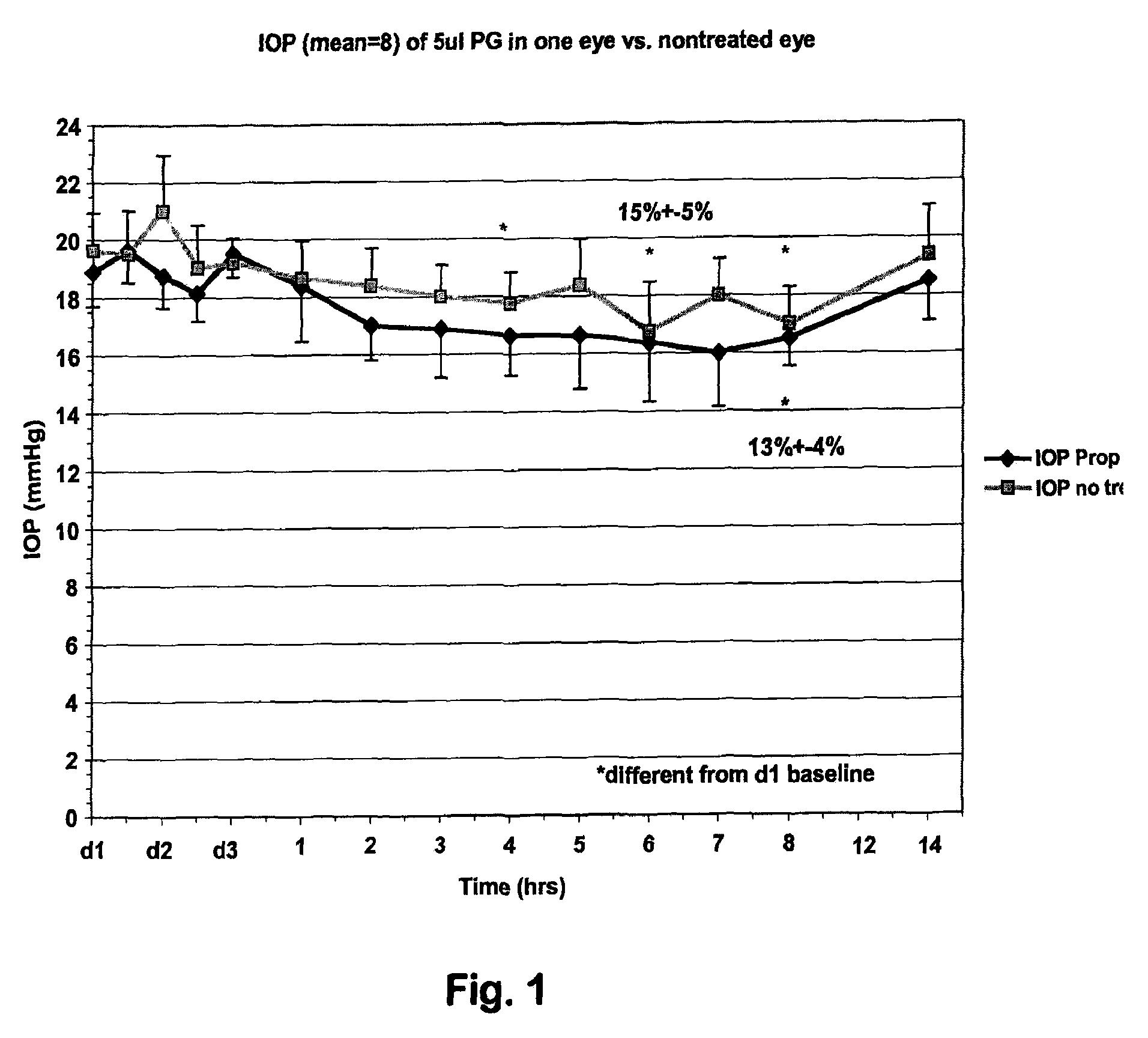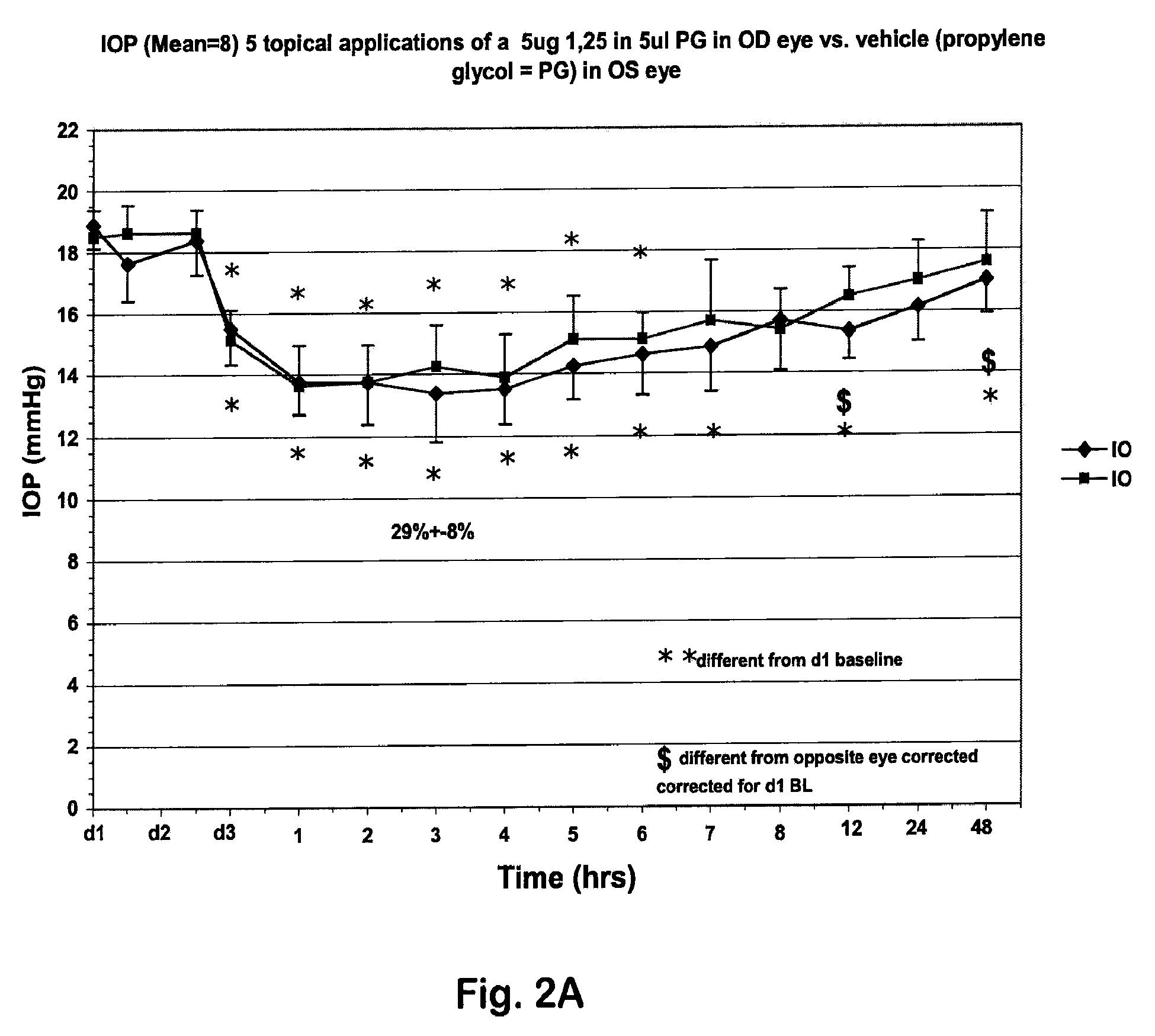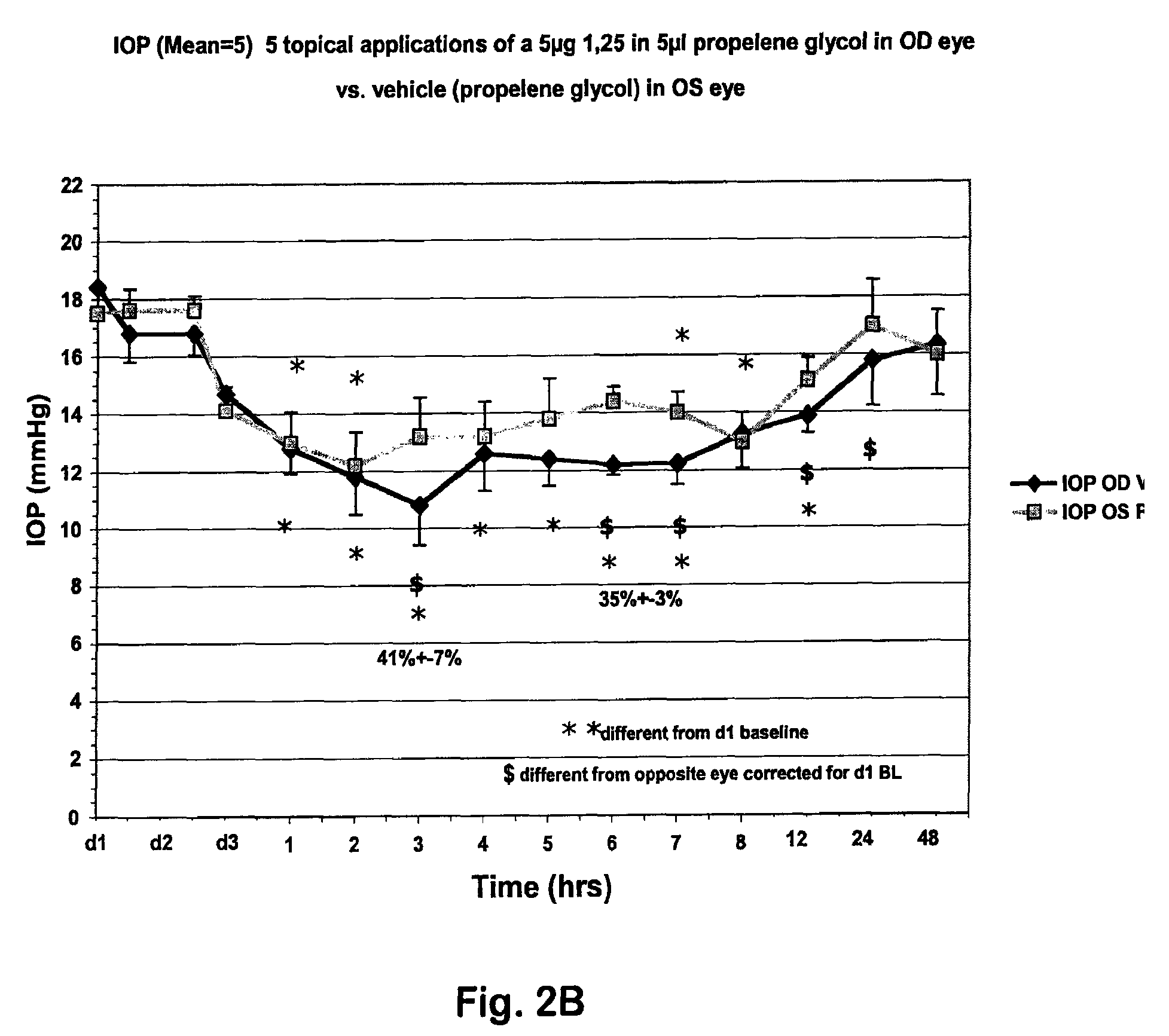Vitamin D compounds and methods for reducing ocular hypertension (OHT)
a technology of vitamin d and compounds, applied in the field of compound and method for reducing intraocular pressure and treating ocular hypertension, can solve the problems of difficult identification of molecular events responsible for oht, lack of knowledge, and character excavation of optic nerve head and corresponding visual field defects, so as to reduce ocular hypertension, not having serious and unwanted side effects, and easy formulation
- Summary
- Abstract
- Description
- Claims
- Application Information
AI Technical Summary
Benefits of technology
Problems solved by technology
Method used
Image
Examples
example 1
Treatment of OHT with 1.25 (OH)2D3, AGR and 2MD
[0080]The Examples below disclose compounds and methods used to reduce OHT by reducing primate intraocular pressure (TOP).
[0081]Materials and Methods.
[0082]1,25-Dihydroxyvitamin D3 (1,25(OH)2D3), AGR and 2MD compounds were >=98% pure.
[0083]Animals, Anesthesia.
[0084]Ocular normotensive adult cynomolgus monkeys (Macaca fascicularis), of either sex, weighing 3-7 kg were anesthetized with i.m. ketamine HCl (3-25 mg / kg, supplemented with 1-10 mg / kg) for IOP and topical drop administration. All monkeys were free of any ocular abnormalities according to slit lamp biomicroscopy at the time measurements were taken. The monkeys were provided by the Primate Center at the University of Wisconsin-Madison. All experiments were done in accordance with the ARVO Statement on the Use of Animals in Ophthalmic and Vision Research.
[0085]Treatments and IOP Measurements.
[0086]The intraocular pressure (IOP) was determined with a “minified” Goldmann applanation...
example 2
Measuring IOP Reduction Following Treatment with Vitamin D Compounds
[0109]Monkeys Treatments and Intraocular Pressure (TOP) Measurements.
[0110]Adult cynomolgus monkeys (Macaca fascicularis) of either sex were anesthetized with intramuscular ketamine HCl (10 mg / kg initial, 5 mg / kg supplemental). Baseline pretreatment IOP was determined by Goldmann applanation tonometry [Kaufman, 1980] with cream used as a tear film indicator [Croft, 1997]. Two baseline IOP measurements were taken 5 minutes apart. Monkeys were then treated topically with 5 μl of 1,25-dihydroxyvitamin D3 (1,25-(OH2)D3(0.1-5 μg) in propylene glycol to one eye and vehicle (propylene glycol) to the opposite eye twice a day for 5 treatments total. Drops were administered to the central cornea, one min apart, while the monkeys were in a supine position with their eyelids held open for at least 30 sec post drops. IOP was also measured prior to the afternoon treatment. On the third day, IOP was measured prior to the morning t...
example 3
Reducing the Intraocular Pressure without Changing the Aqueous Humor Dynamics
[0112]Materials and Methods.
[0113]All animal experiments were conducted in accordance with the University of Wisconsin IACUC and National Institutes of Health guidelines, and with the ARVO statement for the Use of Animals in Ophthalmic and Vision Research.
[0114]Animals and Diets.
[0115]Male Sprague-Dawley weanling rats were obtained from Harlan (Indianapolis, Ind.) and maintained on a highly purified vitamin D-deficient diet, containing 0.47% calcium and 0.3% phosphorus (Pi) supplemented 3 times a week with 500 μg DL-α-tocopherol, 60 μg menadione, and 40 μg β-carotene in 0.1 ml soybean oil (AEK) [Suda, 1970]. Rats were housed in hanging wire cages and maintained on a 12 h light / dark cycle. Rats fed the vitamin D-deficient diet were maintained in a room with incandescent lighting, and all potential sources of ultraviolet light and vitamin D were excluded. At 14 wk of age, blood was taken from the tail for mea...
PUM
 Login to View More
Login to View More Abstract
Description
Claims
Application Information
 Login to View More
Login to View More - R&D
- Intellectual Property
- Life Sciences
- Materials
- Tech Scout
- Unparalleled Data Quality
- Higher Quality Content
- 60% Fewer Hallucinations
Browse by: Latest US Patents, China's latest patents, Technical Efficacy Thesaurus, Application Domain, Technology Topic, Popular Technical Reports.
© 2025 PatSnap. All rights reserved.Legal|Privacy policy|Modern Slavery Act Transparency Statement|Sitemap|About US| Contact US: help@patsnap.com



